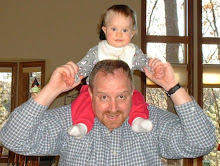
A couple of reasons we picked Addison were that it is where the DPE I am going to go to for my check ride is based there, I needed an intermediate place to fly so my leg to Durant was over 50nm and also because Addison is in class B airspace and you have to talk to DFW approach control in order to get in there. One thing I have learned about night flying is that it is very hard to find an airport at night, no matter how well lit it is. everyone thinks that with all of the runway lights that it is easy to see. The problem is that the street lights and all of the other lights that illuminate a city are much brighter than the runway lights. You can't really see the pattern of lights until you get close to tracking the centerline of the runway. One thing I have found that helps is to first look for the beacon (the green and white light that denotes an airport) and a dark spot. Addison is in the middle of a lot of bright lights so I just look for the big dark spot, with a beacon, near the bright lights.
I fought a headwind to Addison but it made for a really slow approach (slow ground speed). After we took off I requested flight following to Durant. The tower handed us off to DFW departure and had me climb up to 3500 feet which put me right in the middle of class B airspace. Once I leveled off and got the airplane trimmed, I was getting about 108 kts indicated but 137 kts on the ground. We were going to be in Durant very quickly (ETA was about 33 min). Richard had me do an interesting thing to get lined up with the runway for my approach. since I was coming at the airport from the southwest and the runway is 172 degrees, I never was going to be able to see it straight on. So he had me dial in the GPS 35 approach on the GPS and fly an intercept to the final approach fix for the approach. I turned to head about 70 degrees (my original track was about 20 degrees) until the needle started moving. Then as the needle started moving, I started to turn until it stopped, then center it. After doing this, I looked straight ahead and there was the airport. I descended and moved over to fly the downwind leg where I got slowed up and readied myself for the approach to 17. The hard headwind I was experiencing died down at about 500 feet off of the ground. We got it put down and readied ourselves for the flight back to McKinney.
On the way back I had the opposite effect from the wind. 108 indicated and 87 kts on the ground. This gave me time to fine tune my mixture. This airplane has an EGT (Exhaust Gas Temperature) gauge that rarely works. It was working this night. I started to lean the mixture and watched the temp go up. The proper way to lean an airplane, using the EGT, is to lean it until the needle stops going up and starts back down. Then richen the mixture until you get past the peak temp and it goes down a little bit again. This makes the mixture short of peak temp on the rich side. This gives you the best performance while conserving fuel. I was able to lean it pretty good for a cool night at 4500 feet.
Once we got less than halfway, I mentioned that I would like to track the localizer in on the approach without flying the official ILS approach. so I turned more to the west so that I could intercept the localizer pretty far out. I called McKinney tower and told them that I was about 16 miles out and wanted to join the localizer for a full stop landing. They told me to give them a call when I was 4 miles out (which is where the outer marker is). By then I had already intercepted the localizer and glide slope and was dead on for a perfect no flaps landing. I added some carb heat and put it down a little faster than usual, because of no flaps, and taxied to parking. It was a beautiful night for flying but it had to come to an end. I'm starting to like this night flying. You can see everything that you lose during the day and can see airplanes for 20 to 30 miles.
My E-Logbook
This weeks video is from a clip I found on how an airplane is made. I got to fly a Diamond DA-40 last week and when I found this, I thought it was kind of cool, even though they dumb this stuff down a lot for this show.


No comments:
Post a Comment